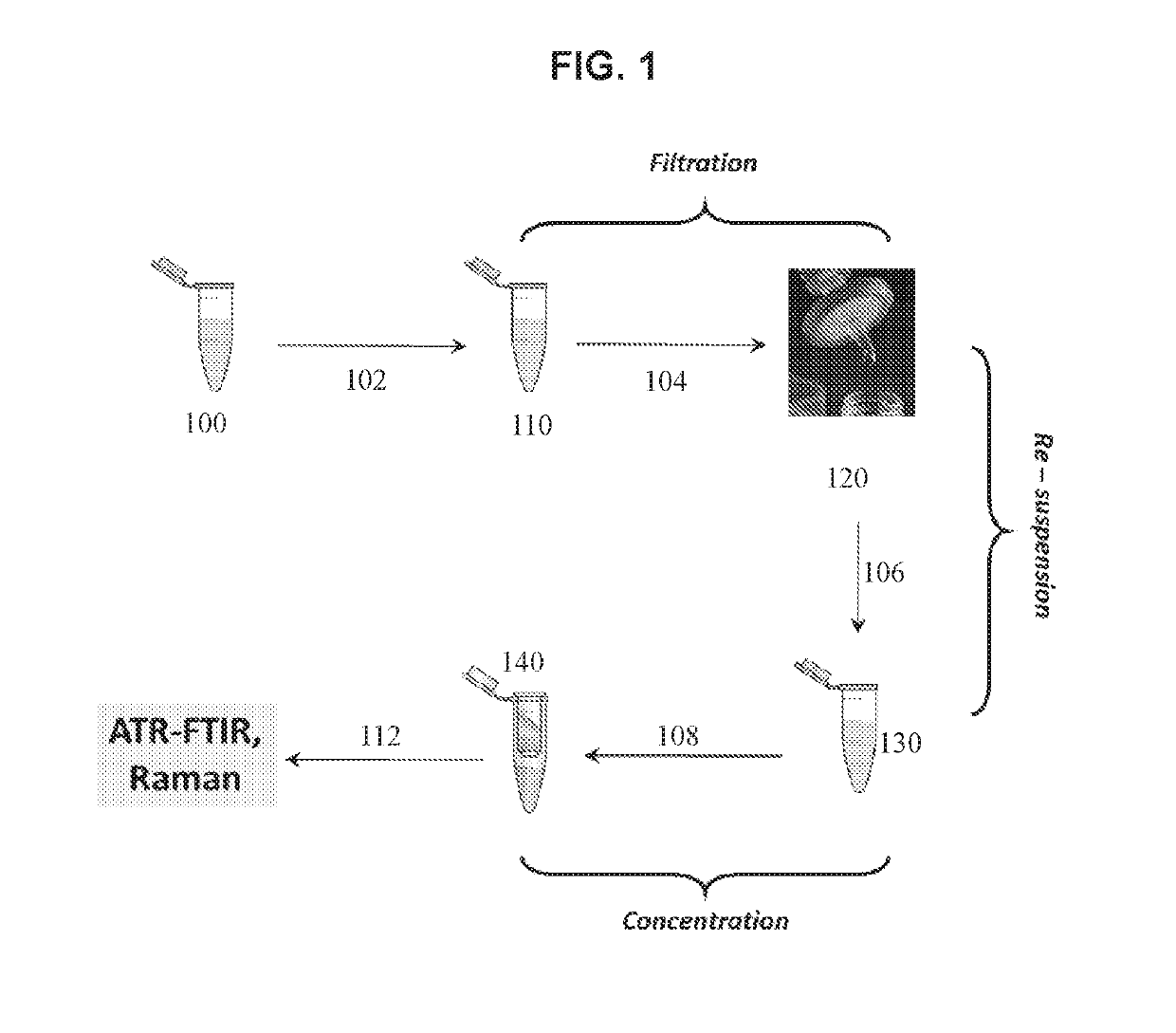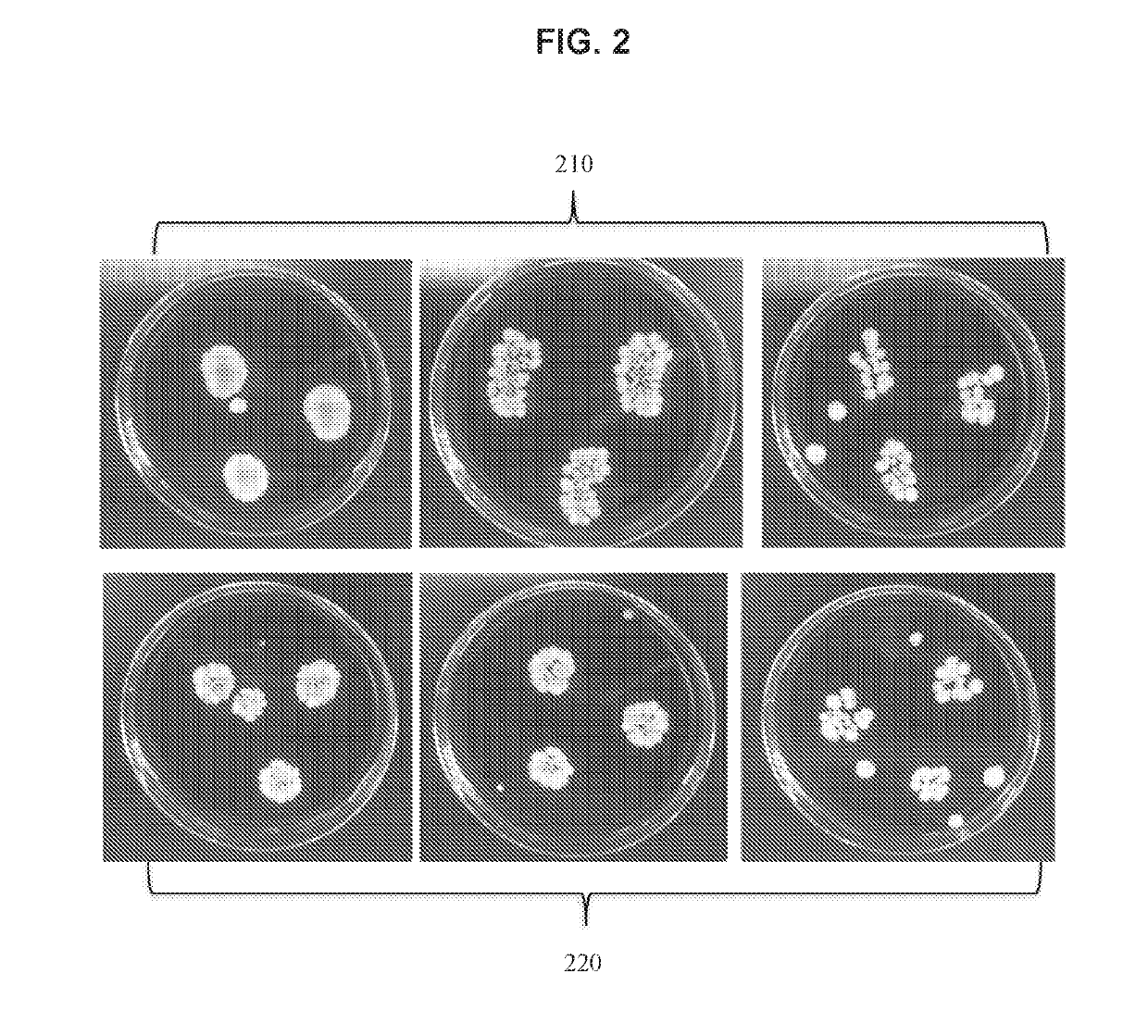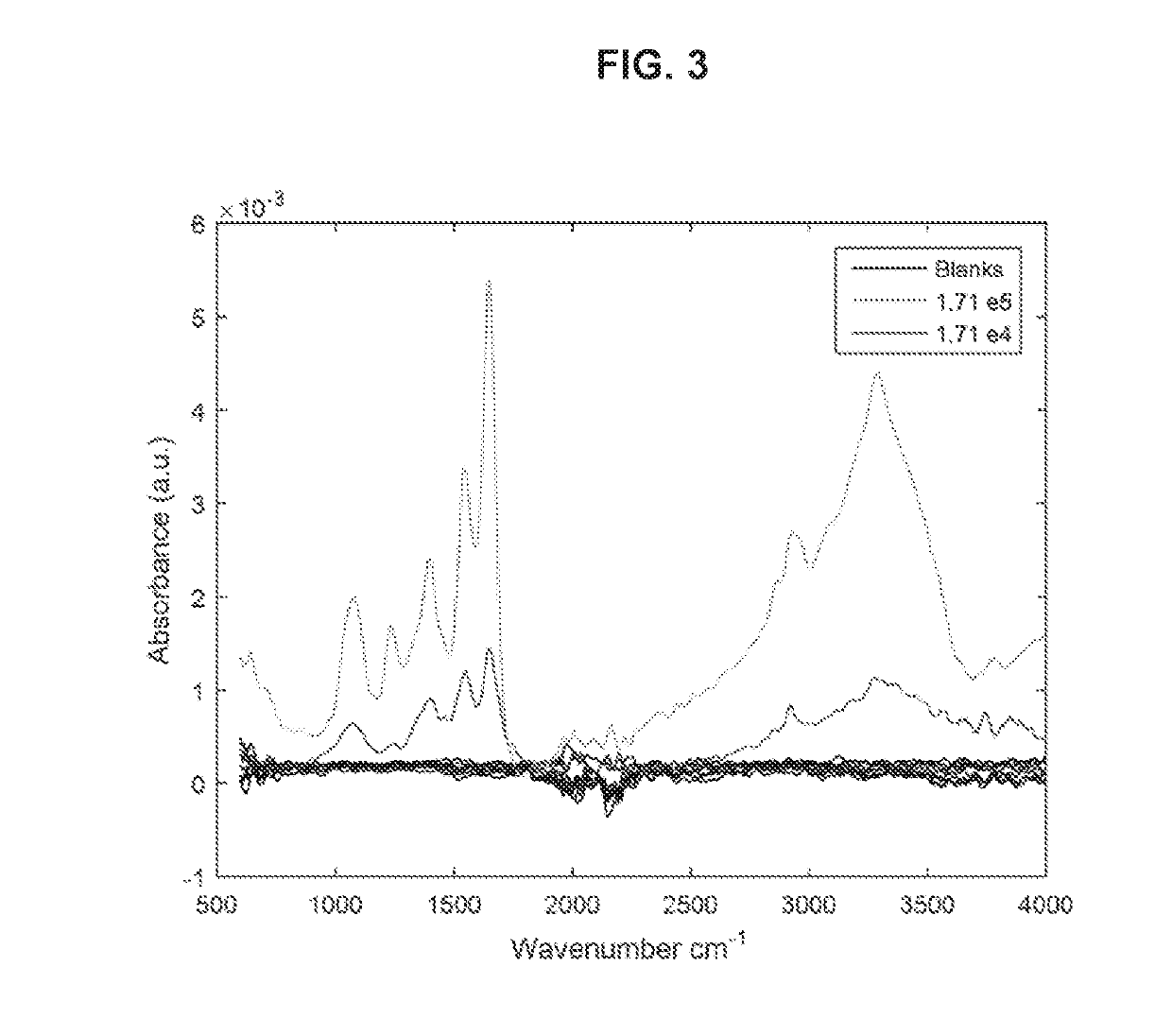Spectroscopic systems and methods for the identification and quantification of pathogens
a technology applied in the field of spectroscopic systems and methods for the identification and quantification of pathogens, can solve the problems of life-threatening sepsis, medical treatment, and current sepsis diagnosis techniques that are not practical for point-of-care testing, and achieve high specificity and high sensitive
- Summary
- Abstract
- Description
- Claims
- Application Information
AI Technical Summary
Benefits of technology
Problems solved by technology
Method used
Image
Examples
Embodiment Construction
Direct Detection and Identification of Pathogen
[0059]In some variations, a pathogen in a sample may be detected and identified based on its IR / Raman spectral profile, which is representative of its specific molecular phenotype. The pathogens may be isolated through filtration and then preconcentrated from the biofluid onto the surface of an ATR crystal or substrate for infrared and / or Raman spectroscopy.
[0060]The method may include the steps of collecting whole blood into serum separation tube, and generating a serum such as through centrifugation (e.g., 100-10000 RCF, 1-20 minutes). The serum may be filtered using a filter system with pore sizes selectable in a range between about 0.015 micron to 1 micron pore size that permits the filter system to trap any pathogens of a serum sample on the surface of a filter. Filter materials may be chosen depending on the need for hydrophobic or hydrophilic filter characteristics. The filter may be washed using, for example, ultrapure water or ...
PUM
| Property | Measurement | Unit |
|---|---|---|
| pore size | aaaaa | aaaaa |
| wavenumber | aaaaa | aaaaa |
| wavenumber | aaaaa | aaaaa |
Abstract
Description
Claims
Application Information
 Login to View More
Login to View More - R&D
- Intellectual Property
- Life Sciences
- Materials
- Tech Scout
- Unparalleled Data Quality
- Higher Quality Content
- 60% Fewer Hallucinations
Browse by: Latest US Patents, China's latest patents, Technical Efficacy Thesaurus, Application Domain, Technology Topic, Popular Technical Reports.
© 2025 PatSnap. All rights reserved.Legal|Privacy policy|Modern Slavery Act Transparency Statement|Sitemap|About US| Contact US: help@patsnap.com



